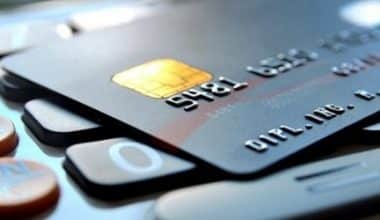You’ve probably been invited to pay for online purchases using PayPal or other digital wallets at some point. In this post, we will discuss what a digital wallet is, how they work, and the top digital wallets in 2023.
What is a Digital Wallet?
Using a computer, smartphone, or other smart devices, digital wallets allow you to make payments from your financial accounts. They eventually eliminate the need to carry a physical wallet.
Apple Pay, Google Pay, and Samsung Pay are likely the three most popular digital wallets, but there are many more. PayPal and Venmo are two additional popular digital wallets that are uniquely social in that they allow you to instantly send money to retailers and friends.
Zelle is another popular digital payment solution that comes standard with many bank accounts.
How Do Digital Wallets Work?
To get started with a digital wallet, first determine which one you want to use. This option will most likely be influenced by your mobile operating system – Apple Pay for iPhone users, Google Pay for Android users, and so on.
You can also utilize one or more of these. Different digital wallets may be better suited for various uses. For instance, you may have:
- If you forget your real wallet, you can use Apple Pay as a backup payment method.
- To divide bills with friends and family, use Venmo.
- PayPal allows you to pay quickly, easily, and securely at retailers who accept it.
If you wish to use a digital wallet, you’ll need to enter your card details into the app or website of your choice. Your information will then be encrypted, and you will be able to use the wallet only after unlocking your device and authorizing its use.
To make a mobile payment, simply authorize the digital wallet and hold it close enough to the card reader for your information to be communicated. Mobile payments are not accepted by all retailers. On the retailer’s point-of-sale system or card reader, look for the contactless payment indicator. The sign resembles a sideways Wi-Fi emblem.
When it comes to peer-to-peer payment apps like Venmo or Zelle, you can frequently only send money to those who already have an account with the same service.
Top Digital Wallets In 2023
#1. Cash App
Cash App, which was published in 2014, allows customers to make contactless purchases using their iPhone or iPad, but only if they have an iPhone 6 or newer. Similar to many other digital wallets, this one keeps your credit and debit card information. This information, however, is turned into tokens that can only be accessed with your fingerprint. To put it another way, it’s one of the most secure wallets accessible.
Cash App also offers another product called Wallet. This useful program holds boarding passes, concert and movie tickets, loyalty cards, and coupons.
Pros:
Cash App works with the majority of debit and credit cards; you’ll be able to transfer and receive money from friends, buy cryptocurrencies, and even donate to charitable organizations. Transferring money to a bank account can take up to 2-3 days, which is rather common in the sector. You may also effortlessly invest in stocks and bitcoin using the app. The Cash app allows you to create a fee-free debit card. It may be used anywhere and everywhere to earn fast savings on everyday purchases. Finally, the Cash app allows you to get recurring paychecks up to two days early.
Cons:
While Cash App is fantastic, be prepared to pay fees. If you want to make an instant deposit, the deposit fee will range from 0.5% to 1.75% but will be applied to your debit card immediately. If you send money to Cash App with a credit card, a 3% fee will be added to your total.
#2. Google Wallet
Google Wallet was a mobile app until 2016. It’s now a web app that lets you send money to anyone in the United States with just an email address or phone number, using your debit card, bank account, or Wallet Balance. Transfers take a few minutes, and you’ll need your Google Payments PIN to access funds.
Pros:
Because Google Wallet is a server-side wallet, users’ information is stored on Google’s infrastructure. Users can send as much money as they want to the wallet and utilize it any way they want. It functions similarly to any other debit card. However, the app’s support for Google Wallet isn’t the finest. To get around this, you can purchase a real card that is accepted anyplace debit Mastercard is accepted. Peer-to-peer payments are the main focus of Google Wallet nowadays.
Cons:
Google Wallet’s fees fluctuate slightly from those of Cash Apps. Credit costs can range from 4% to 4%, while debit fees will be 1.5% or $0.31, whichever is greater. There is no bank transfer fee, and money can be withdrawn within 1-3 business days. Google Wallet isn’t for everyone, although it works well with other Google products.
#3. Android Pay
Android Pay is Google’s in-store smartphone payment option that is incorporated directly into the operating system. Like most other mobile wallets, Android Pay uses NFC technology to enable payments by touching a phone to an NFC-enabled terminal. Android Pay is intriguing because Walgreens has introduced a reward program for Android Pay users, and you can now purchase and pay for food via Grubhub.
Pros:
Android Pay can handle numerous cards and allows you to select which one to use. If it’s too much trouble and you actually just need one card, you can make that card your default. This way, you won’t have to second-guess yourself and may save time with swift mobile payments. Android Pay should also be accepted at the majority of merchant locations. If you want to make payments on your phone, you can use Android Pay, which eliminates the need to re-enter your credit card information each time. Google Wallet is not exactly the same as Android Pay. While Android Pay is mostly utilized for fee-free money transfers, Google Wallet is primarily focused on peer-to-peer payments.
Cons:
There are no fees for sending or receiving money. However, debit card transfers into or out of the account incur a 1.5% fee (or a minimum of 31 cents). Transferring funds can take 1-3 business days, as with most other digital wallets, however, there is a cost for a fast transfer.
#4. Samsung Pay
Samsung Pay, which debuted in 2015, employs both NFC and MST technology, making it unique among digital wallets. This means that contactless payments can be made at both NFC-enabled terminals and classic magnetic stripe terminals. Aside from credit and debit cards, you may also store gift cards, rewards cards, and subscriptions.
Pros:
Samsung Pay is extremely simple to set up and will work at any location in the United States and abroad that takes credit cards. You can even pay using your Samsung Smartwatch if you have one. You can also control your money account rather easily. Samsung even has its own purchasing reward scheme. This service is free, and you may save up to 30% on Samsung products, which can add up quickly if you’re in the market for a new phone or home appliance. You will also receive Samsung rewards points, which you can then use for cash.
Cons:
Samsung Pay is limited to mobile purchases. There is no official website where you may make or manage payments. This may not seem like a big thing, but all of their competitors, including Apple Pay, Google Pay, Venmo, and others, allow you to pay via the internet. In fact, you can’t even access your account online. This may not be a significant concern for some, but it could be a deal breaker for others.
#5. PayPal
PayPal is one of the most established and extensively used digital wallets. It has been used to conduct online payments and move monies between parties with reasonable simplicity. Paypal is accessible to Android and iOS users.
After striking deals with Mastercard and card processor First Data, PayPal has upped its game. This gives customers the option of paying with the PayPal app, which is similar to tap-to-pay solutions like Apple Pay or swiping a PayPal Mastercard to make in-store purchases.
Pros:
Paypal is really simple to use and is an excellent way to send money to friends, family, and others. You’ll also never have to worry about security because the organization takes tremendous precautions to avoid fraud. If you pay for something that turns out to be a scam, the company can assist you to get your money back. Your bank and credit card information will be encrypted as well, and there will be no costs if you send money to friends, family, or others.
Cons:
While Paypal is fantastic for transferring money to friends and family, there are fees associated with corporate transactions. You will be charged for instant transactions, as with most other digital wallets, but not for transfers that take 1-3 business days. Finally, and perhaps most essential, Paypal freezes accounts quickly. If your account is locked, you must demonstrate that you have done nothing wrong. Until then, you will have no access to any funds sent to or held in your account.
#6. Venmo
In addition to PayPal, the firm controls Venmo, one of the most popular peer-to-peer payment apps available. Simply connect a credit card, debit card, or checking account and begin repaying your buddies. Payments can also be made to you. Venmo protects your financial information using data encryption, and you can even broadcast your transactions with a message on Facebook, Twitter, or Foursquare. Transfers between banks and debit cards are free, but card fees are 2.9 percent.
Pros:
Venmo provides a quick, easy, and free way to transfer money from a bank account or debit card. When it comes to credit card payments, there are some costs, although they are usually pretty minor. You can use Venmo to pay for various items at various businesses, and you can even get your own Venmo debit or credit card. What distinguishes Venmo is its social component. Messages are attached to payments, and you can add likes, comments, and other interesting things. This may not be a big deal for some, but it makes the entire procedure more enjoyable for others.
Cons:
While the social aspect is wonderful, it should be noted that all payments are public by default. You can adjust your privacy settings so that payments are only visible to your friends or the Venmo recipient. While this is a positive step, it can be inconvenient if you like to keep your personal money private. You also cannot cancel payments on Venmo. If you need the money returned, you must approach the recipient directly rather than through the app. Furthermore, you will be unable to do international transactions, and Venmo is a popular tool among scammers.
#7. Alipay
As a subsidiary of Alibaba, it’s no surprise that this is China’s leading third-party payment solution and digital wallet. However, in 2016, Alipay expanded beyond mainland China and into Europe, primarily allowing Chinese visitors to make in-store payments and receive discounts. If your business is located in a popular tourist area, or if you have an online store that caters to international visitors, it’s absolutely worth giving Alipay a try.
Pros:
Alipay protects your personal information and simplifies the payment process.
Cons:
Alipay keeps extensive records of every user’s expenditures. This covers purchases, investments, and the amount of money they currently have on hand. Financial fraud is very common on Alipay.
#8. Walmart Payment
Walmart’s mobile wallet, which was released in the summer of 2016, employs QR codes rather than tap-to-pay, which relies on NFC technology. This wallet is compatible with both Android and Apple phones and can be used to organize Walmart gift cards, create shopping lists, keep Walmart receipts, refill prescriptions, and even locate an item inside your favorite store.
Pros:
Walmart Pay connects with major credit card providers, so your information will not be stolen. You download the app, scan your products at the checkout area, and pay through the app to use it. This simplifies the process and can save you time. You can use it with any card linked to your Walmart account, as well as Walmart gift cards.
Cons
The major disadvantage of Walmart Pay is that it can only be used at Walmart. It also cannot be used to directly connect to a bank account and will not provide cash bank rewards. While Walmart Pay improves the shopping experience, it is relatively limited.
Read Also: VIRTUAL WALLET: Definition, Types, and Benefits
What Else Are Digital Wallets Capable Of?
Not only are digital wallets useful for making payments easier, but they may also be used to store other crucial documents organized and quickly accessible
What can you keep in a digital wallet?
- Credit or debit cards.
- Boarding passes.
- Hotel Reservations
- Tickets to a concert.
- Gift certificates.
- Coupons.
- Loyalty Reward Cards.
Many apps, particularly fast-food establishments with loyalty schemes, provide their own digital wallets. Starbucks, for example, rewards users who use the app with “stars” that can be redeemed for free drinks and other perks. Starbucks gift cards can be recharged with a debit or credit card.
Is It Safe to Use Digital Wallets?
Concerns about safety and security are widespread with digital wallets. What happens if you lose your phone? Can hackers simply grab your data? Will you jeopardize your finances?
No, it does not. Because mobile payments are heavily encrypted and tokenized, none of your actual card or account data are stored within the digital wallet, digital wallets are actually safer than physical cards.
But how exactly does that work?
When you enter your personal information into a digital wallet, it is encrypted and turned into a unique code that only authorized entities can access.
Tokenization, which substitutes sensitive encrypted data with a non-sensitive digital equivalent known as a token, is also included in digital wallets. Every time a user makes a payment, a unique token is produced at random, and only the merchant’s payment gateway may match this token to accept the payment.
When encryption and tokenization are used together, your information becomes useless and unreadable to fraudsters. Because of tokenization technology and the requirement for identification, contactless digital payments are often safer than purchasing with a physical card’s chip or magnetic stripe. If someone steals your card, it’s much easier for them to use it — but with a digital wallet, there are typically additional layers of security, such as a fingerprint scan, facial recognition, or password protection.
Pros and Cons of Digital Wallets
Pros:
- Convenience: Because it’s accessible from your device, it’s easier to carry around and takes up less pocket space. You can also store numerous sorts of cards in the digital wallet. If you forget your wallet, you can still make payments at most retailers.
- Safety: Because digital payments include data encryption and tokenization, they are safer in many respects than traditional debit or credit card transactions.
Cons
- There are certain restrictions on where you can use it: Not all retailers or people to whom you want to transfer money accept payments via digital wallets, or may not have the technology in place to do so.
- It is determined by your device: If the device on which your digital wallet is kept runs out of battery or you lose access to it for whatever reason, you will also lose access to the digital wallet.
What Distinguishes Digital Wallets From Crypto Wallets?
While digital wallets are just an electronic replica of what you’d carry in a physical wallet, crypto wallets are not: They keep the keys required to buy and sell cryptocurrency. To oversimplify, the fundamental purpose of utilizing a digital wallet is to pay for ordinary purchases. To purchase cryptocurrency, cryptocurrency holders often utilize a crypto wallet.
However, there are several things that mobile wallets and cryptocurrency wallets share. A crypto wallet, like mobile wallets, can be used to pay for goods or services at locations that accept cryptocurrencies. And both wallets are significantly safer than carrying a credit card with you.
However, all of the information required for either type of wallet is available online and hence subject to hacking on some level. Cards and accounts in a digital wallet are often FDIC-insured or have some sort of fraud protection through the financial institution, whereas cryptocurrency is still mostly unregulated.
Conclusion
For virtual payments, tickets, gift cards, and more, digital wallets provide consumers with a quick, effective, and secure solution. While it may not be time to shed your physical wallet just yet, we will most certainly see a rise in usage by US consumers and businesses as consumers become more familiar with contactless and digital financial services.
- What is a Crypto Wallet? Types & How to Use them
- HOW DO YOU USE VENMO: What It Is and How Use It
- HOW TO SEND MONEY ON VENMO: Detailed Guide
- Bitcoin Wallets: Types, Reviews & All You Need
- HOW DOES VENMO MAKE MONEY? The Business Segments






